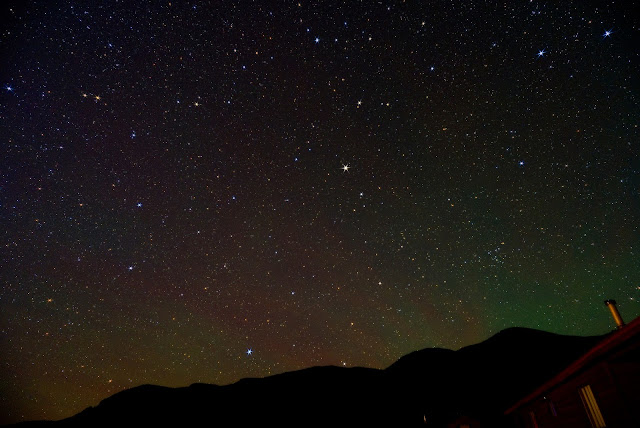The new lens is a Rokinon (Samyang) 85mm f/1.4 AF Series II for Sony E mount. It is one of several variants that are successors to the original manual-focus Rokinon 85mm f/1.4 Aspherical. This older lens comprises nine elements, one of which is aspherical. My copy was purchased in 2011 with a Nikon F mount. The new lens has eleven elements, five of which are HR (High-Refractive Index) and one ED (Extra-low Dispersion).
I have had good results with the old lens, but it does show pronounced purple fringing (Longitudinal Chromatic Aberration) in astro photos . This can be mitigated somewhat in post-processing, for example by using the "Defringe" option in Affinity Photo. My hope was that the updated optical design would reduce the purple fringing and eliminate the need for software remediation. This turned out to be correct. The corner astigmatism is also about half as much as seen with the old lens. Another win.
The sky brightness at 11pm was sqml=21.6, which is nicely dark. Even better, there were no outside lights glaring from neighbor's cabins.
The following images were taken with a Sony A7iii camera, ISO 1600, 30 s.
 |
Milky Way rising over Snowshoe Mt. New 85mm lens (AF II), f/1.4.
|
 |
Old 85mm lens (Aspherical), f/1.4.
|
There was some variable green airglow between these two images, which were seven minutes apart. All of those dark patches and filigree are galactic dust clouds in the next spiral arm between us and the center of the galaxy.
The center of the galaxy has a supermassive black hole with a mass of about 4 million suns. It is a radio source known as Sgr A*. It is invisible in normal light, but can be studied at infrared and radio wavelengths. The location is marked with a white circle in the next image.
 |
The white circle marks the galaxy center. New 85mm lens, f/1.8.
|
 |
85mm f/1.4: Old manual focus (left) vs New AF (right)
|













































